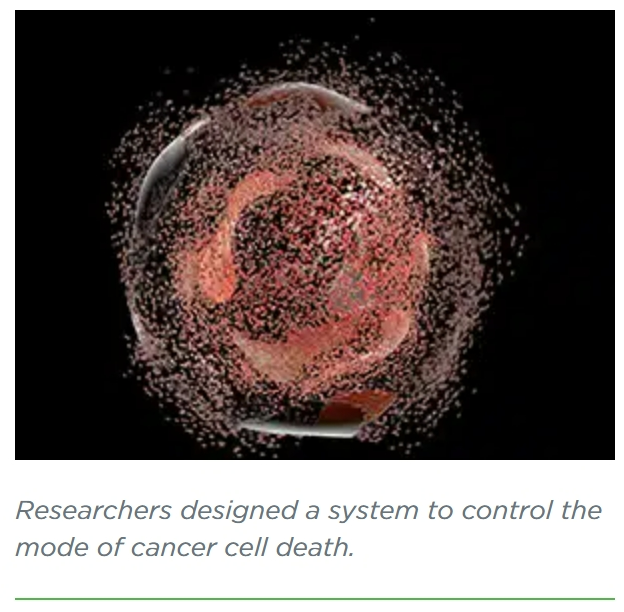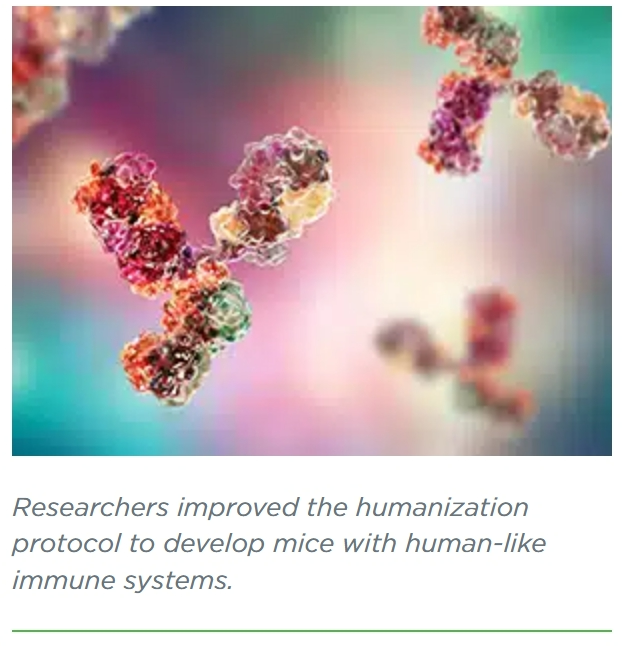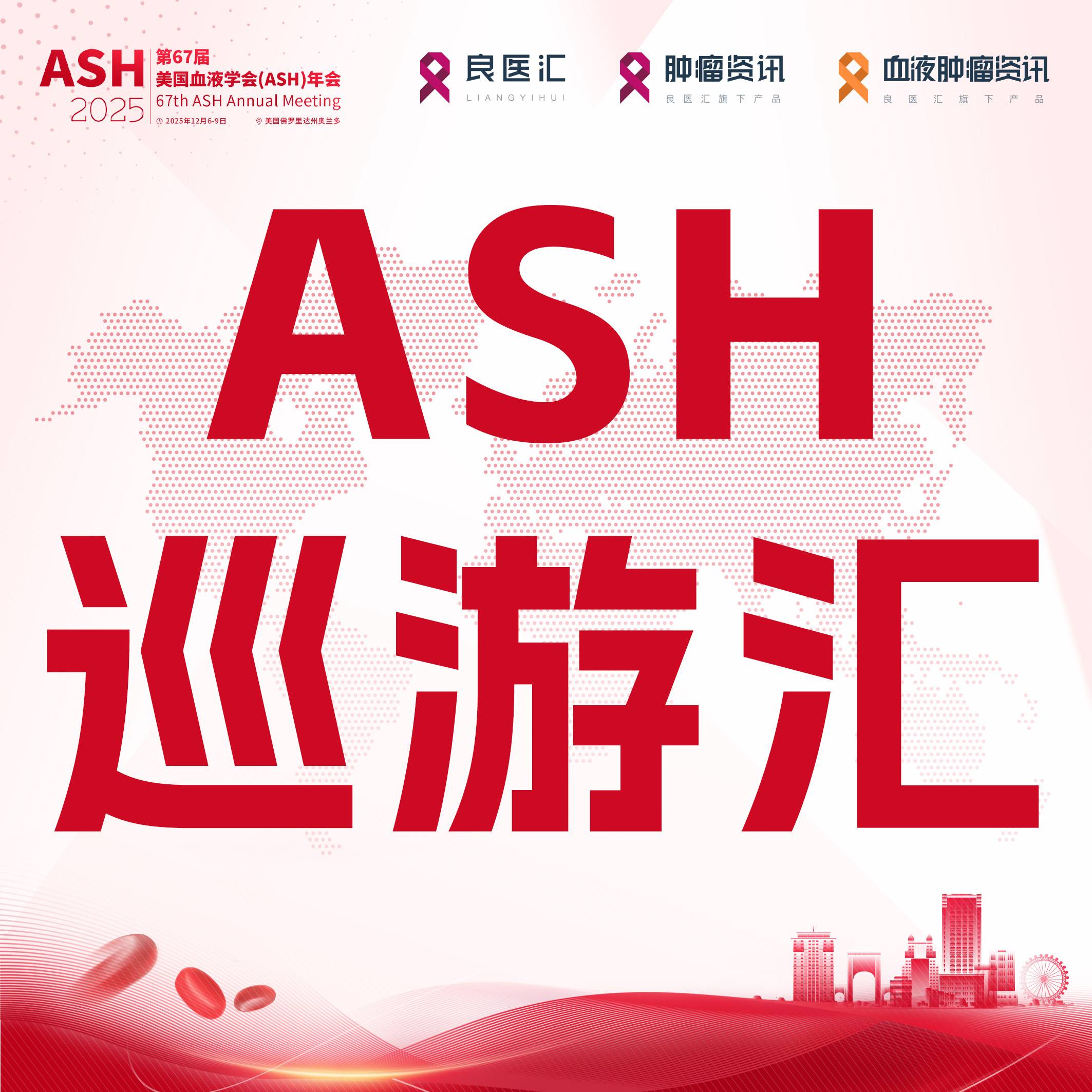
以下内容原文发布于AACR官方博客《Cancer Research Catalyst》, 中文内容仅做参考,请点击文末“阅读原文”,阅览原文内容。
AACR每季度推出的“ 来自实验室 ”系列专栏致力于报道最前沿的癌症研究技术,本季度带来了 六项炙手可热的研究: 使用声光脉冲治疗“化疗脑”; 控制癌细胞死亡机制的系统; 以病毒为灵感、用于治疗肺部肿瘤的递送系统; 具有惊人的人类免疫系统的小鼠模型; 用“微型结肠”观察癌症诱发过程; 以及采用洋葱状多层结构进行递送的癌症疫苗 。
了解更多内容,请阅读以下原文。
From the Bench, July 2024: Fighting Chemo Brain With Light, Controlling Cancer Cell Death, and More
A way to fight “chemo brain” with audiovisual pulses, a system to control the mechanism of cancer cell death, a virus-inspired delivery system to treat lung tumors, a mouse model with a strikingly human immune system, a look at cancer initiation using “mini-colons,” and a cancer vaccine delivered in onion-like layers. Our quarterly
“From the Benc
h”
series covering cutting-edge cancer research technologies returns with these six sizzling studies to round out your summer.
Strobe Lights and Survivorship: Fighting ‘Chemo brain’ With Sensory Stimulation
Among the harmful side effects of chemotherapy that patients with cancer may grapple with are cognitive defects, commonly termed “chemo brain,” which can include problems with memory, attention span, and executive functioning. In a study published in Science Translational Medicine , researchers used a particular frequency of flashing lights or auditory pulses to relieve chemo brain in mouse models.
Previous preclinical studies have shown that audiovisual stimulation at 40hz, administered in a therapeutic regimen called gamma entrainment using sensory stimuli (GENUS), may protect against neurodegenerative diseases such as Alzheimer’s and dementia. In the current study, researchers tested whether GENUS could also mitigate the symptoms of chemo brain in mouse models treated with cisplatin or methotrexate. They found that using GENUS during chemotherapy administration decreased signs of chemotherapy-mediated damage in mouse brains, including cell death, demyelination, prevention of neuron growth, and inflammatory glial cell activation.
The researchers also assessed cognitive function in mice treated with chemotherapy with or without GENUS. Chemotherapy significantly impaired the mice’s performance on memory and executive function tests, both immediately after treatment and several months after treatment, but both short-term and long-term impairment was mitigated in mice given GENUS. This was only true when GENUS was administered during the chemotherapy regimen; it had no effect on reversing chemo brain if given later. The researchers suggested that GENUS may be a promising new supportive therapy for patients undergoing chemotherapy.
Cheating Death: Controlling Cancer Cell Death Pathways
Clinicians can choose the treatments that kill their patients’ cancers, but how the cancer cells die is mostly out of their control. Cancer cells may undergo one of many death pathways, based on various cell-intrinsic and extrinsic variables, and the pathway they choose can impact treatment responses or toxicities. The ability to control the mode of cell death could, therefore, allow better treatment management.

In immunologically “cold” tumors, for example, it might be beneficial to promote pyroptosis, a type of cell death that stimulates the immune response. On the other hand, in patients with high levels of inflammation, apoptosis might be preferred since it does not cause proinflammatory immune signaling.
In a study published in Cell , researchers developed a system that overrides cell regulatory mechanisms to dictate which death pathway cells undergo, engineering cell lines to express specific combinations of synthetic proteases, degrons, and death-associated proteins to do so. They showed that this system induced pyroptosis in apoptosis-prone cells and apoptosis in pyroptosis-prone cells. Further, they developed synthetic killer cells that could selectively deliver the requisite components to specific target cells in co-culture experiments, allowing the researchers to control not only the mode of cell death but also which cells were killed. The authors suggest that, with further research, this system could allow programmable cell death to become a part of cancer treatment.
Prime Delivery: Virus-inspired Packaging for Immune-priming RNA
Researchers are exploring the immune-stimulating RNA poly(I:C) as a potential treatment for lung metastases, but delivering poly(I:C) into lung cells has proved challenging due to its rapid degradation. While researchers commonly use lipid nanoparticles to stabilize and deliver other RNAs into lung cells, the high lipid content that allows these nanoparticles to reach the cytosol—where RNA functions—may limit poly(I:C)’s potency.
To design a better delivery system for poly(I:C), researchers of a study published in the American Association for Cancer Research (AACR) journal Cancer Research looked to viruses for inspiration. They examined the structure of SARS-CoV-2, a virus that has evolved to deliver its RNA genome into the cytosol of host lung cells, and mimicked its design to develop an inhalable liponanogel (LNG) that effectively protected and delivered poly(I:C) into lung cells.
The LNG was made of a hyaluronic acid-based nanogel surrounded by a lipid shell—inspired by the SARS-CoV-2 protein capsid and lipid envelope, respectively. Delivery of poly(I:C) by LNG led to 13.7-fold greater immune stimulation (as measured by interferon signaling) than poly(I:C) alone, as well as a twofold greater immune stimulation than delivery by the lipid nanoparticles commonly used for other RNAs. Further, combining LNG-delivered poly(I:C) with immune checkpoint inhibition effectively treated lung metastases in mouse models. The authors suggest that LNG-delivered poly(I:C) may be an effective therapeutic strategy for lung tumors.
Vast Immune Complexity in a Tiny Package: An Improved Humanized Mouse Model
While mice are invaluable models to test new cancer therapies, their immune systems are vastly different from those of humans. “Humanized” mouse models, made by engrafting immunodeficient mice with human immune cells or stem cells to give them a human-like immune system, are a popular alternative. Antibody responses in humanized mice, however, are often poor, which can hinder researchers’ efforts to develop and test new cancer immunotherapies.

In a recent study published in Nature Immunology , researchers modified the humanization protocol to give mice a more robust humanized immune system capable of producing neutralizing antibodies. TruHumX (THX) mice were created by injecting immunocompromised mice with human hematopoietic stem cells, followed by at least four weeks of treatment with estrogen. The researchers explained that estrogen has been shown to promote the survival and differentiation of both hematopoietic stem cells and immune cells. Further, female mice and humans have been shown to mount stronger antibody-mediated immune responses than males, suggesting that estrogen might boost antibody production.
Mini Mouse Models: Tracking Cancer Development Using ‘Mini-colons’
Cells grown on a flat dish lack the spatial complexity and cellular diversity of real tumors. Spherical cell assemblages called organoids have more of this information, but their fixed shape does not recapitulate the architecture of the organ being studied. In a recent study in Nature , researchers used a molecular scaffold to shape mouse colon organoids into “mini-colon” structures to examine the initial steps of colorectal cancer development in a carefully controlled environment.
The cells of these mini-colons formed colonic crypt structures arranged around a central lumen. They were engineered to express mutated versions of the cancer driver genes Apc, Kras, and Trp53 when exposed to blue light and the drug doxycycline. This allowed researchers to selectively induce tumor development in different parts of the mini-colons and study their growth over time.
Despite the activation of the same cancer driver genes, tumors in different parts of the mini-colons displayed different molecular and architectural characteristics. Tumors developed in mini-colons also responded differently than conventional tumor organoids to bacterial metabolites and different media compositions. The researchers hope their work will set the stage for the future development of other mini-organ models and may potentially replace animal models in some contexts.
Onion-like Layers: A New Design for Cancer Vaccine Delivery
RNA vaccines have spurred massive progress in the treatment of infectious diseases and cancers alike. However, a typical vaccine delivery nanoparticle can only hold limited amounts of RNA, which may not be enough to stimulate responses in a dense, “immune-cold” tumor.
The authors of a study in Cell designed a new system composed of lipid particle aggregates (LPAs) that pack RNA molecules between layers of lipids to improve antigen delivery, mimic infectious agents, and help remodel the tumor microenvironment. Intravenously delivered LPAs loaded with tumor-derived RNA improved survival in mice with metastatic pulmonary osteosarcoma . In addition to reaching the tumor, the RNA-LPAs trafficked to the spleen and lymph nodes, where they were taken up by antigen-presenting cells to promote T-cell activation. RNA-LPAs also stimulated the release of inflammatory cytokines and the reprogramming of the tumor microenvironment to allow more immune cell infiltration.
In a clinical trial of canine pets with glioma , the administration of RNA-LPAs extended the median survival by more than 100 days compared to a historical cohort given supportive care. A handful of patients have been treated with RNA-LPAs in a phase I clinical trial with minimal toxicities to date, and further clinical studies are ongoing.
更多内容,请点击“阅读原文”
排版编辑:肿瘤资讯-Astrid











 苏公网安备32059002004080号
苏公网安备32059002004080号


